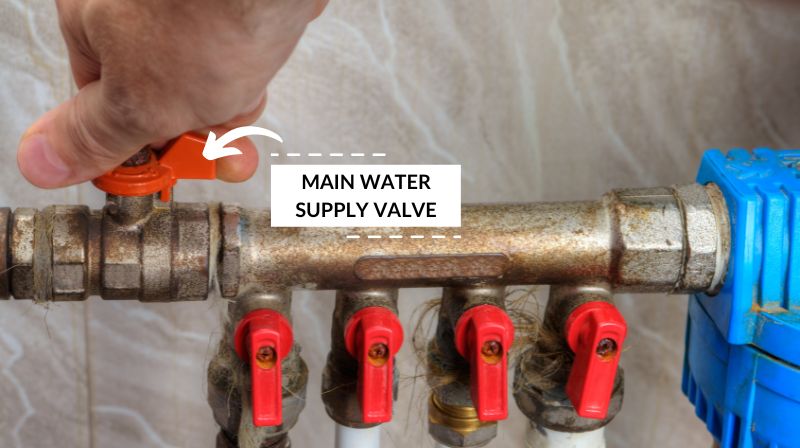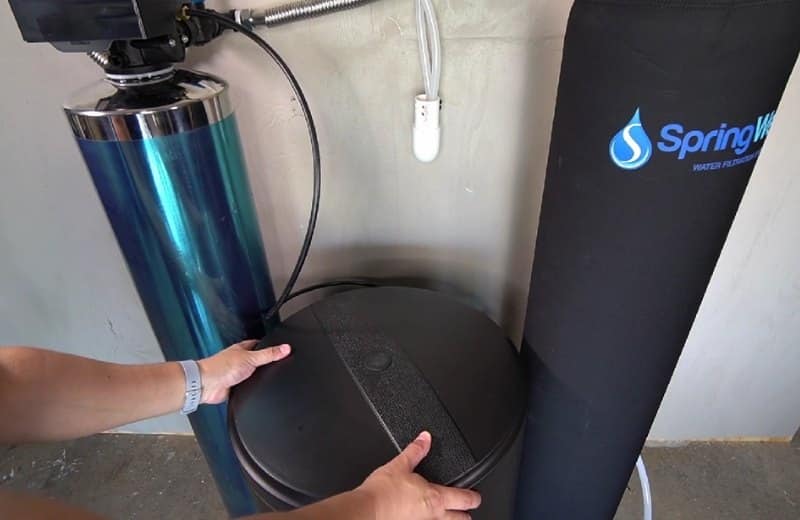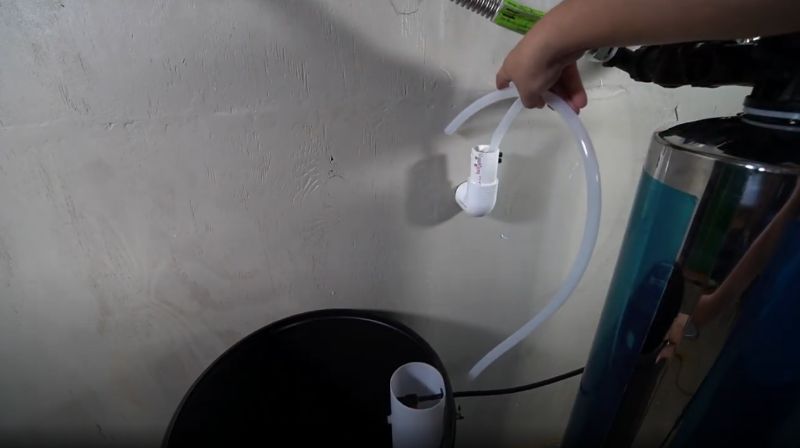Wondering how to remove a water softening system?
Whether you’re moving, replacing your existing water softener with a newer version, or simply going back to hard water in your home, we’ve shared the steps you should take to remove a water softener in this guide.
📌 Key Takeaways:
- To remove a water softener, turn off the water supply and the electricity, then drain the softener and disconnect the inlet and outlet pipes from your plumbing.
- You can then dispose of the softener with a local company or recycle the parts that can be recycled.
Table of Contents
📖 How To Uninstall A Water Softener: Step-By-Step
To remove a water softener from your plumbing system, follow these steps:
Step 1: Gather Your Supplies
Before you get started, gather the tools and supplies you’ll likely need for the job. These include:
- A large bucket
- A wet vac (optional)
- A towel
- A wrench or slip joint pliers
- A screwdriver
Step 2: Shut Off Your Water Supply Or Bypass The Water
Your next task is to shut off the water supplying the water softener (this will usually be your whole home water supply).
If your water softener has a bypass, you can simply engage the bypass valve to send water around the unit, effectively shutting off the water supply without cutting off your access to water altogether.
Usually, the valve should be turned in a clockwise direction to shut off the water.

Step 3: Unplug The System
Most water softeners need electricity to operate. If your water softening system is plugged into a power outlet, pull the plug out of the wall to cut off the power supply.
The softener is now separate from your water and electricity supplies, and you’re ready to move on to the next step.
Step 4: Drain The Water Softener
Next, drain the water out of the system. A softener in operation will contain water in the brine tank, which mixes with salt to form a brine solution.
📌 Disconnecting a softening system before draining it will be harder work for you. Not only will the brine tank be much heavier, but the risk of leaks is much higher.
To drain the softener, you have a few options, depending on the system type:
- Use the hose bib – If you have a large water softener, it likely has a hose bib that you can attach a garden hose to. Direct the hose to a nearby drain for quick and simple drainage.
- Use the drainage tap – Other water softeners have a drainage tap at the base of the tank that you can switch on to empty out the water. You’ll need a bucket to catch the water, and you’ll probably have to work in batches.
- Consider a manual option – If your softener has neither of these options, you’ll need to consider a manual option for drainage. Scoop the water out of the tank using a large bucket or scoop, or use a wet vac (otherwise called a shop vac) to suck up the water in batches.
For quick and convenient draining, some water softener systems have a relief valve. Check for this valve before you start draining.

Step 5: Disconnect The Outlet Pipe
Once you’ve drained as much water as possible from your salt tank, you can disconnect the outlet pipe (the pipe that supplies soft water to your plumbing system).
Before you start, put a towel or a bucket under the connection to catch any leaks. Use a wrench or slip joint pliers to loosen the coupling that attaches the softener to the supply pipe.
Step 6: Disconnect The Inlet Pipe & Drain Line
Repeat the process on the other side of the softener to disconnect the inlet pipe. Catch any spilled water with a towel or a bucket.
Next, disconnect the drain line if it’s attached to a drain pipe or waste system.

Step 7: Remove The Remaining Bolts & Connections
Finally, remove the remaining bolts, straps, or connections that may still be holding the softener in the install location.
The softener should now be completely disconnected.
Ideally, if your softener was installed on a separate loop from your water supply, you can keep the water bypassed through the main water line, with no need to replace a section of piping.
🤔 What To Do With An Old Water Softener
There are a few things you could do with an old water softener:
- Sell it – If the softener is still relatively new and you’ve looked after it well, you might make a couple of hundred dollars by selling it on a second-hand marketplace.
- Send it to a specialist company – Some local companies specialize in water softener disposal. Contact a few companies to get the best price.
- Recycle it – Most water softening systems have recyclable tanks and parts. Check your user manual or contact the manufacturer if you’re unsure.
- Trash it – As a last resort, you could trash your water softener. Softening systems don’t contain hazardous materials – the brine and resin are safe – so they can be disposed of in the trash.
Related: Need a new system? Here are our reviews of the best water softeners this year
❔ How To Uninstall A Water Softener: FAQ
How long does it take to remove a water softener?
The good news is that removing water softeners is much faster than installing the units. The whole deinstallation process should take 30-60 minutes, depending on your DIY knowledge and whether or not your softener has any features that make the process easier (such as a hose bib or a tap for quickly draining the system).
Can anyone remove a water softener?
Yes, anyone can disconnect and remove a water softener from their main plumbing line. Just make sure to follow all the necessary precautions, including shutting off or bypassing your water supply before you get started to prevent catastrophic leaks. If you’re unsure, ask a handy family member to help.
What happens if I just unplug my water softener?
An easy way to stop using your water softener is to just unplug the system and switch on the bypass to send water past the unit. However, this obviously isn’t the best permanent solution if you’ve decided that you no longer want to use a water softener. Over time, the water softener will accumulate bacteria, algae, and other nasties due to the stagnant water sitting for months or years without use. That’s why it’s best to drain and disconnect your water softener sooner rather than later.
How do you decommission a water softener?
You can decommission a water softener simply by cutting off the electricity supply, draining the unit, and disconnecting it from your plumbing. Make sure to divert water around the softener to prevent leaks when you detach the unit.
